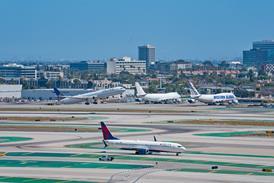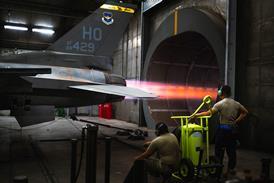Stewart Penney/LONDON
India's Light Combat Aircraft (LCA) has flown for the first time, more than five years after the fighter was rolled out and 17 years after development started. New Delhi has also finalised a deal with Russia for the licence production of 140 Sukhoi Su-30MKI multirole fighters.
Developed by the Indian defence ministry's Aeronautical Development Agency, the LCA took off from the Hindustan Aeronautics (HAL) airfield in Bangalore on 4 January, piloted by Wg Cdr Rajiv Kothiyal. During the flight, which lasted around 20min, the LCA reached 11,500ft (3,500m) and 215kt (400km/h). The aircraft is smaller than the Saab Gripen and is expected to have a maximum take-off weight in the 13t-class.
Speaking after the flight, defence minister Georges Fernandes said: "India has joined a club of seven to eight countries which have the capability of making a supersonic fighter."
Chief of the air staff, Air Chief Marshal A Y Tipnis, did sound a note of caution, however: "We have many more heights to be scaled to ensure that the LCA becomes a frontline fighter."
Development was approved by the Indian Government in 1983, and the first prototype rolled out in November 1995. Indian officials speaking after the first flight suggested the LCA could enter service in "six years". However, an Indian parliamentary committee decided last year that service entry is unlikely before 2012-15. Reportedly, the programme has already consumed Rs25 billion ($535 million) in funding.
US sanctions following India's May 1998 nuclear tests contributed to the delays. Lockheed Martin had been assisting development of the fly-by-wire system, and General Electric provided the engines for the first two LCAs.
The prototype flew with a GE F404-F2J3 engine, although this is due to be replaced by the 18,100lb- thrust (80.5kN) Kaveri being developed by India's Gas Turbine Research Establishment.
Six test aircraft are planned, with the second and third due to fly this year. The third prototype is planned to be the first aircraft fitted with the Kaveri. The fourth and fifth aircraft are due to fly next year, and a two-seat version is scheduled to fly in 2003. The air force requires 200 fighters to replace Mikoyan MiG-21 Fishbeds, which are receiving a major, but also long delayed, upgrade.
At the end of last month, India and Russia concluded a $3.3 billion deal for the licence manufacture of 140 Su-30MKIs to be built by HAL over 15 years. Also signed was a deal for Indian production of the fighter's Lyulka Saturn AL-31FP engines, which are equipped with thrust-vector control nozzles. A number of Su-30s are already in service.
Source: Flight International























